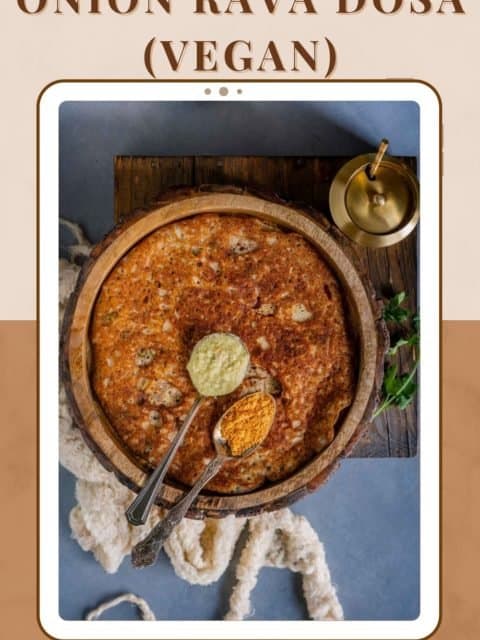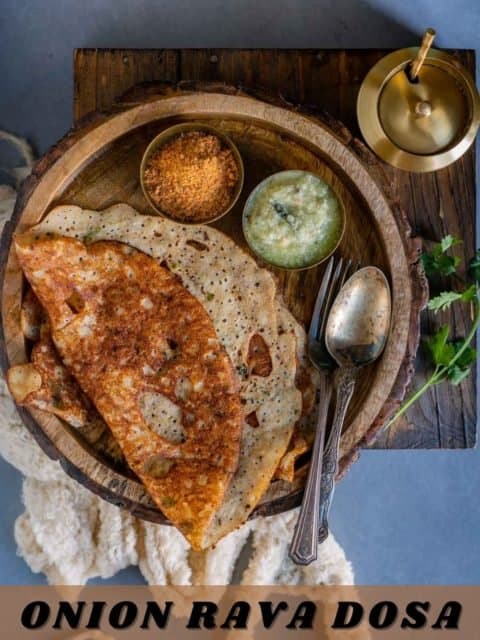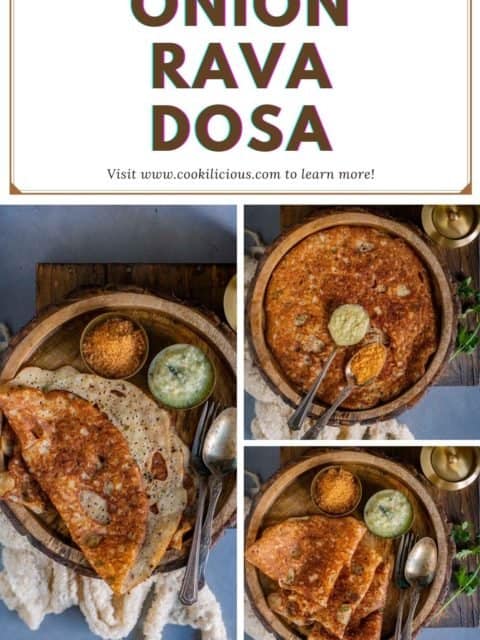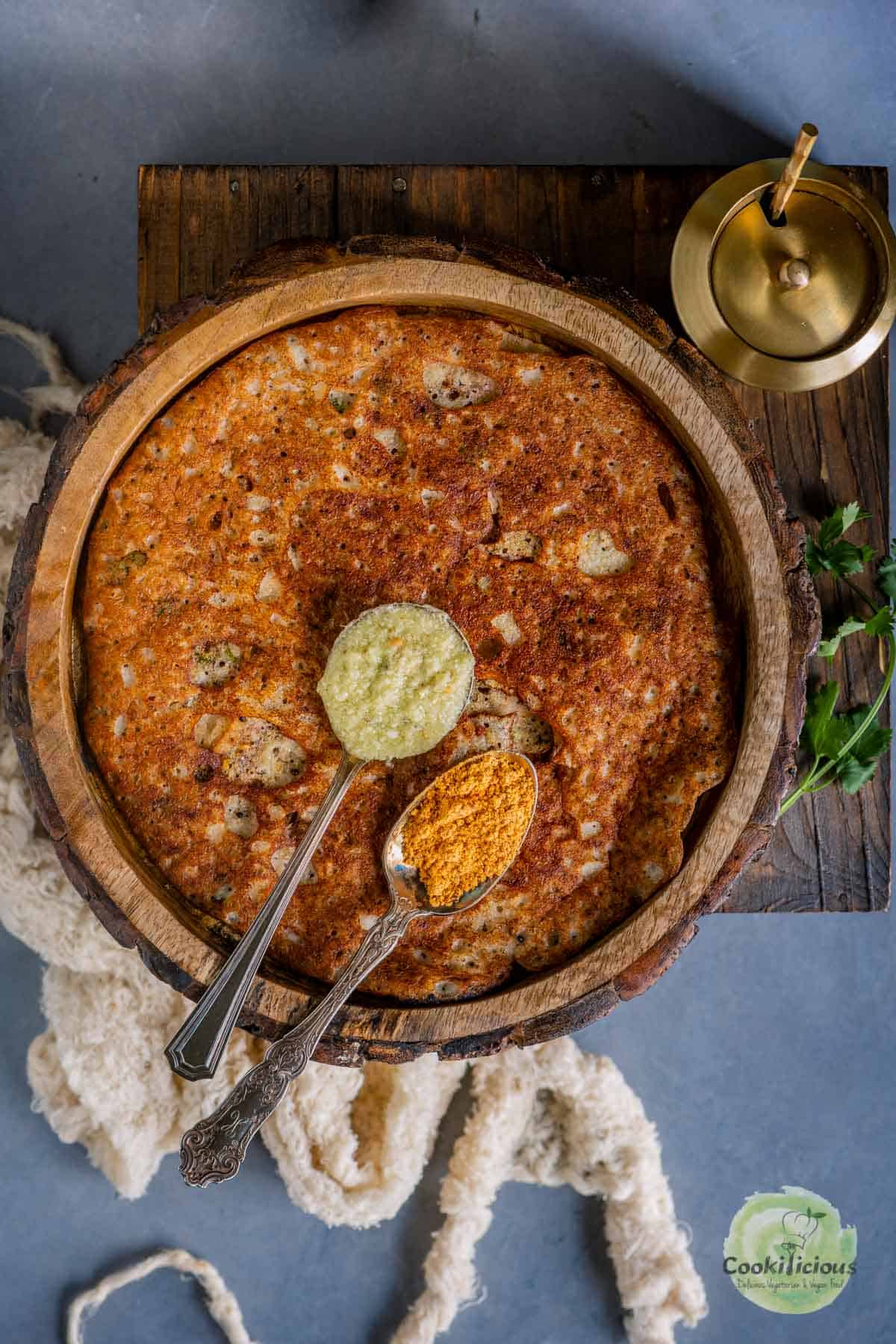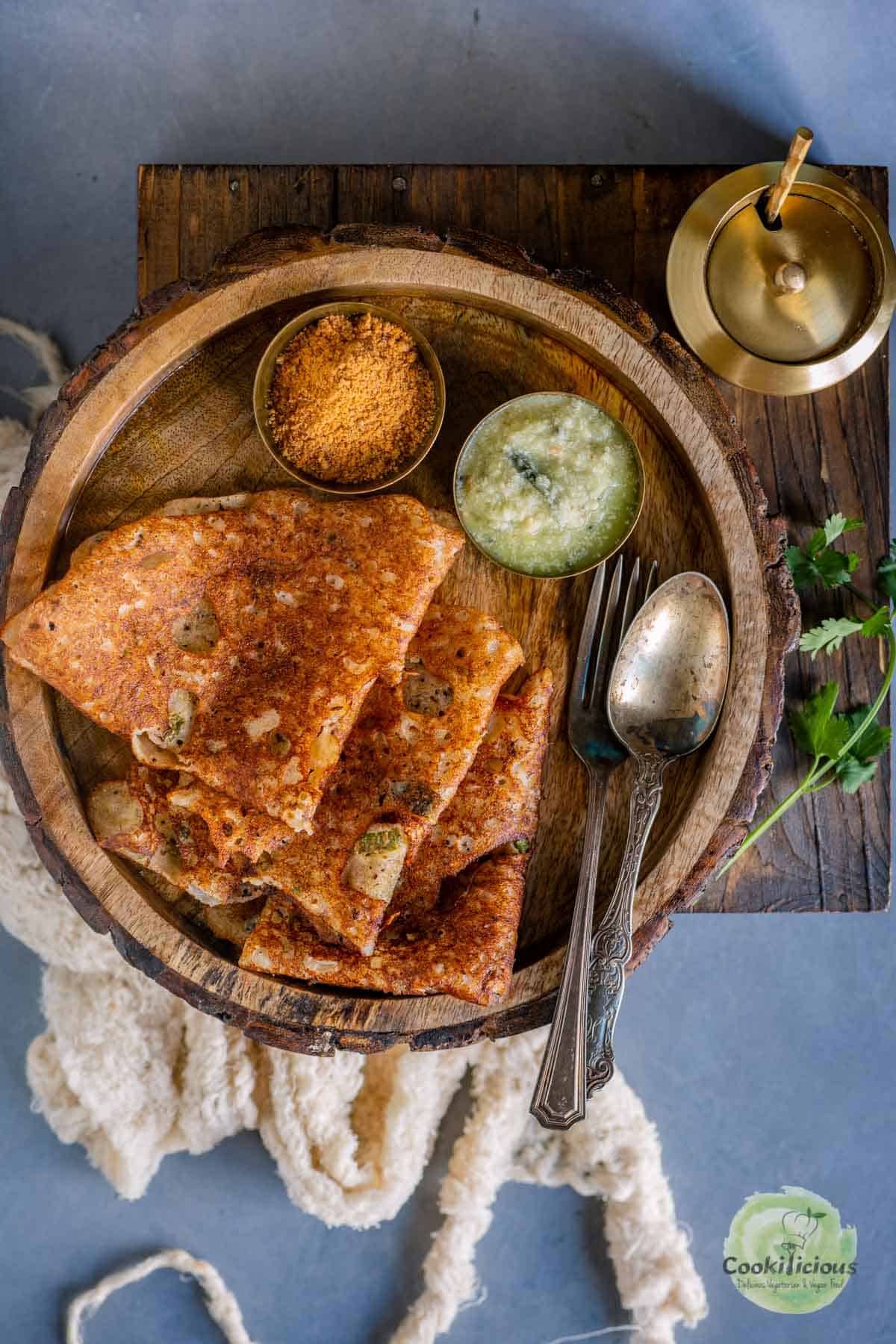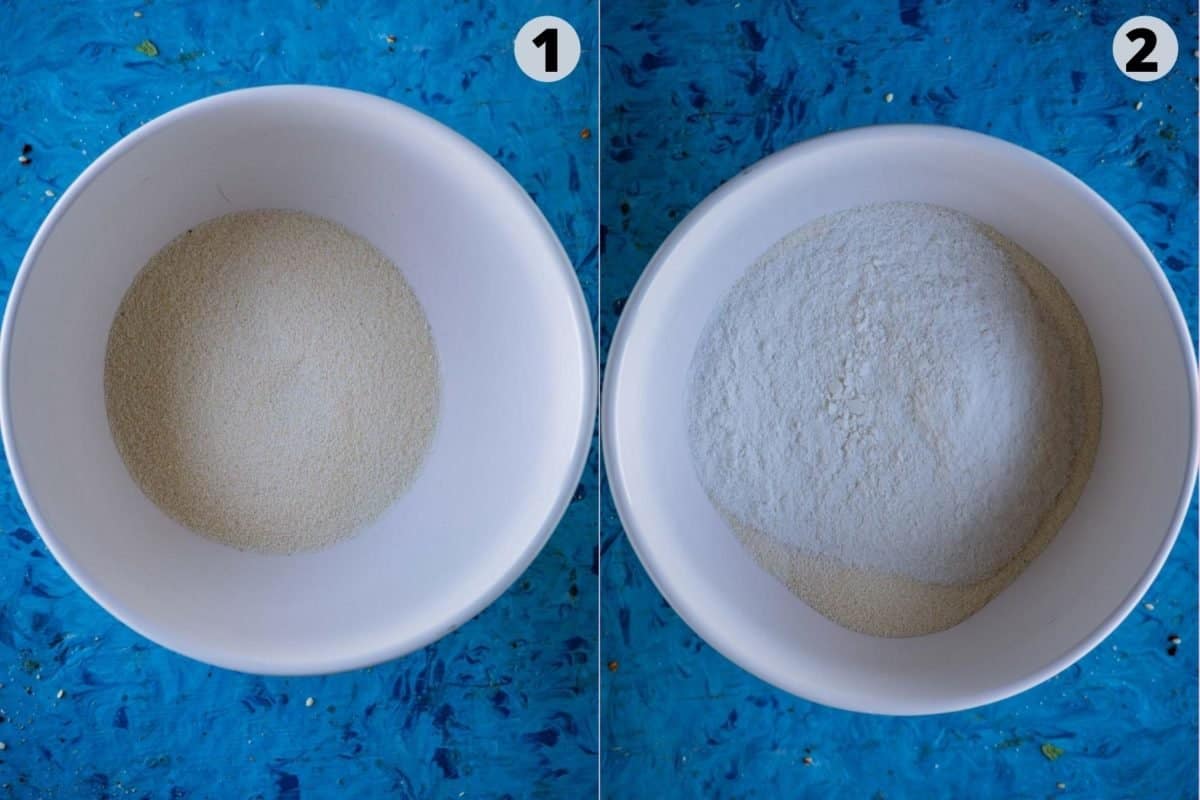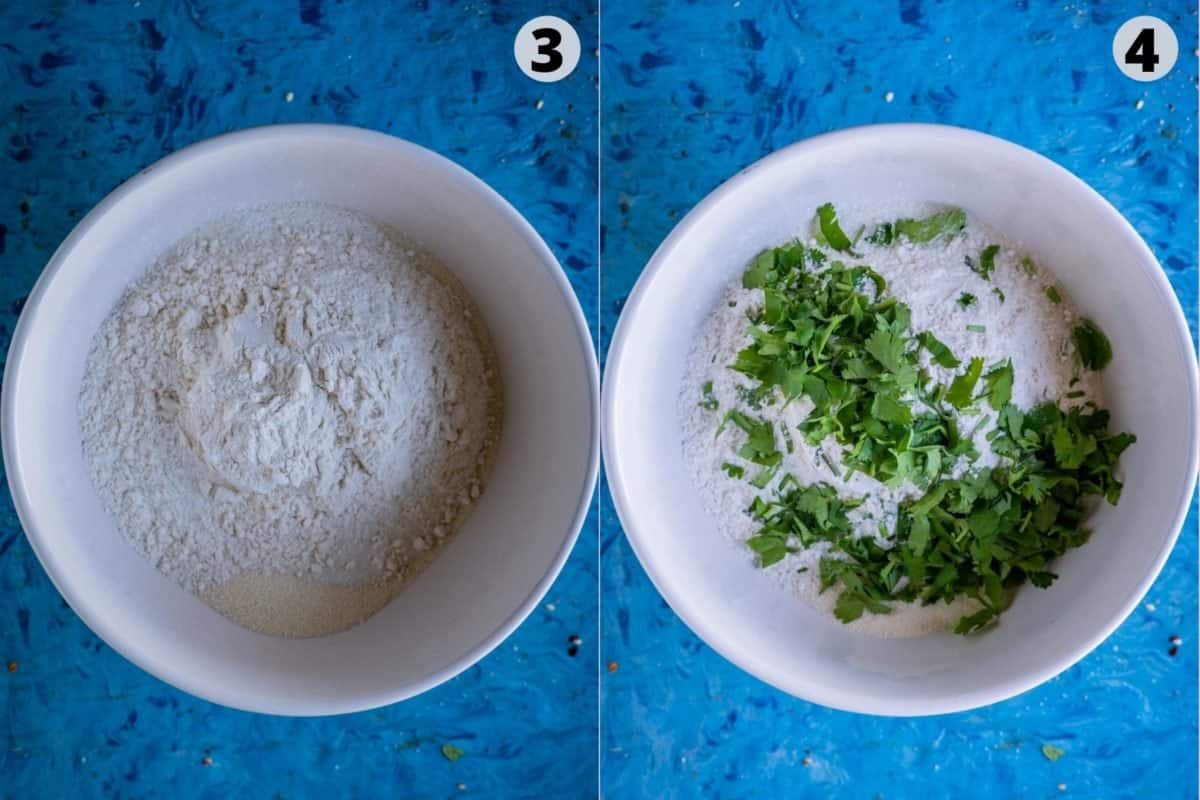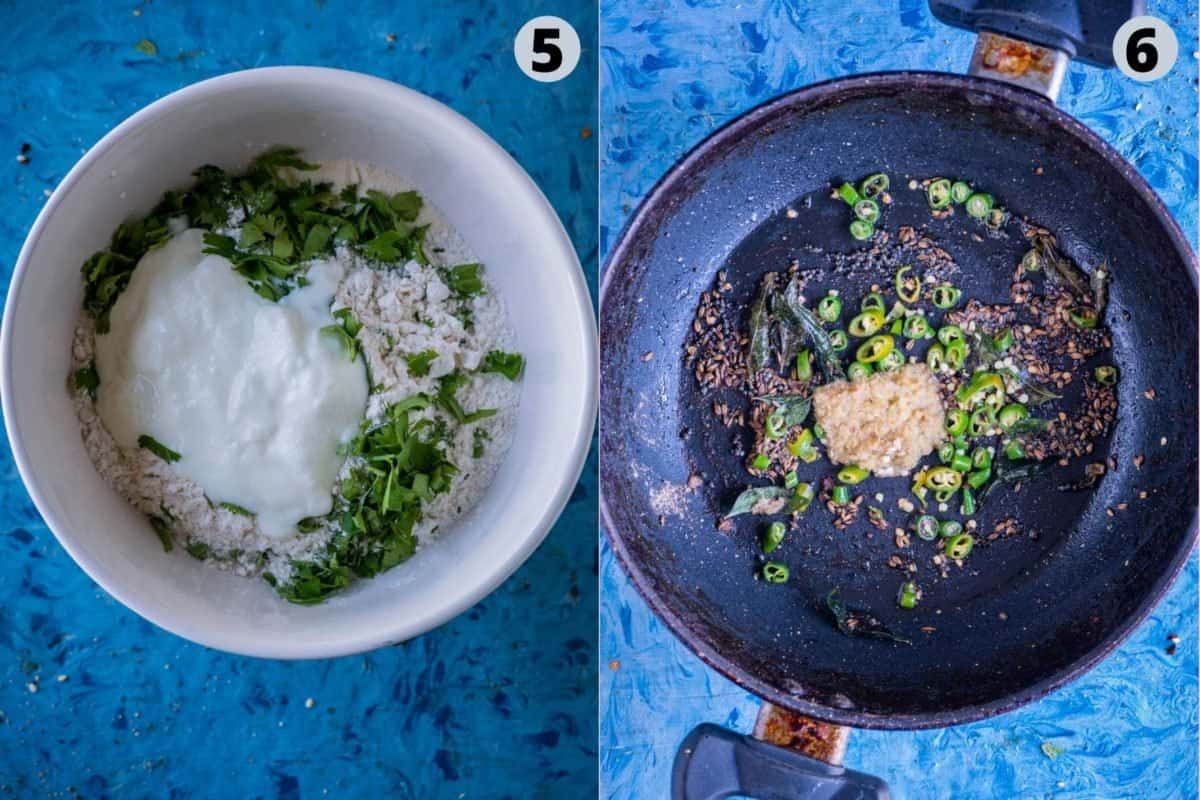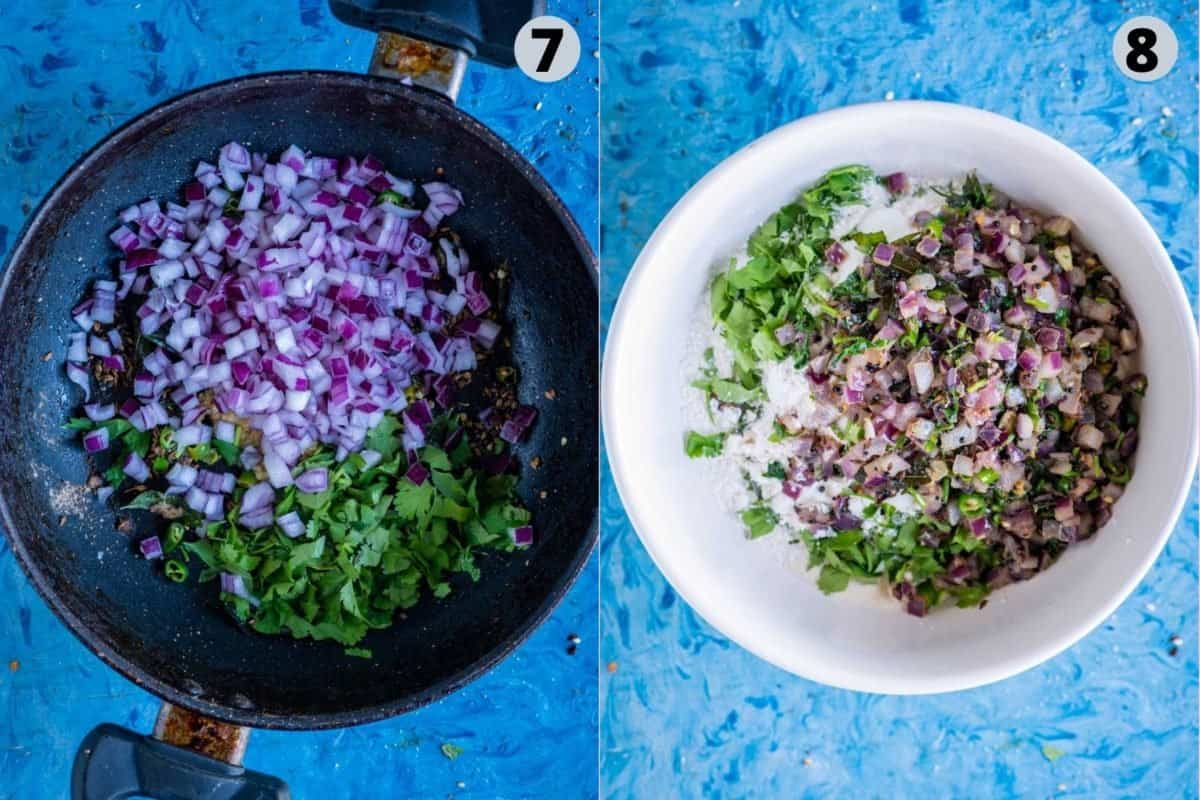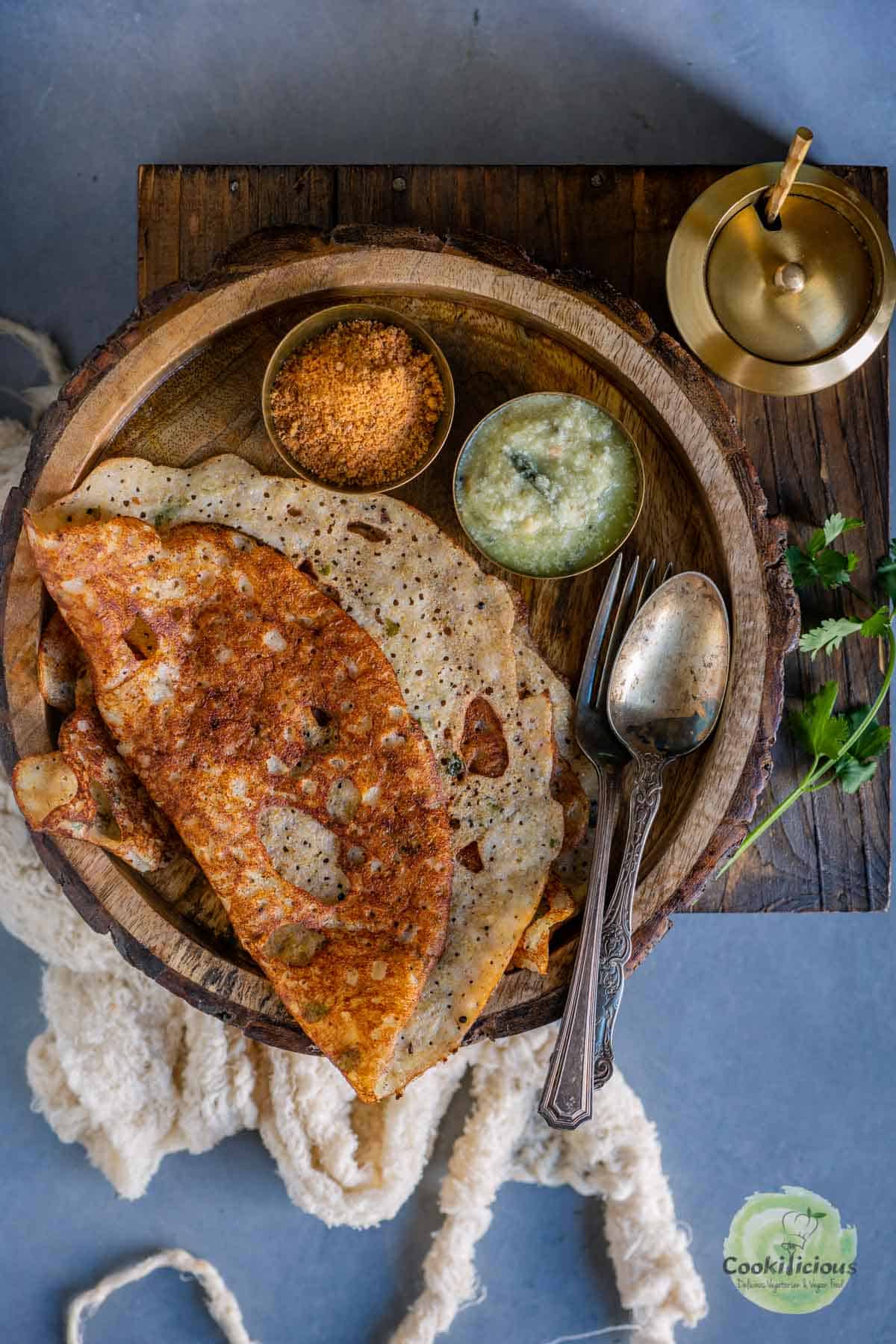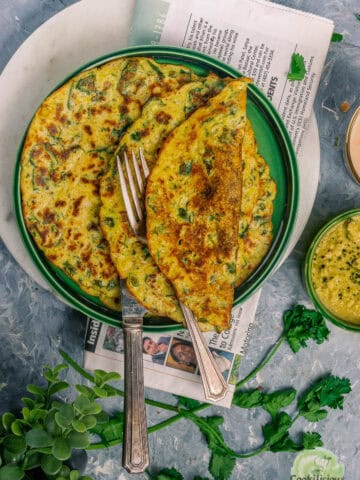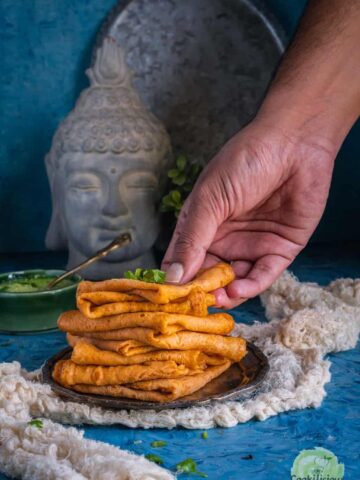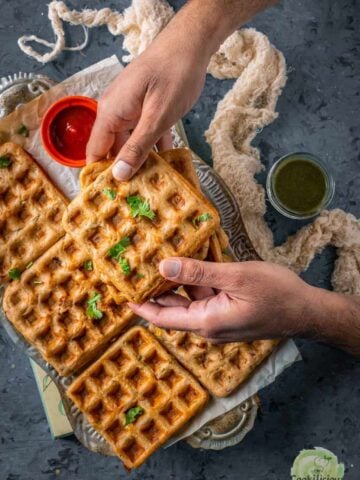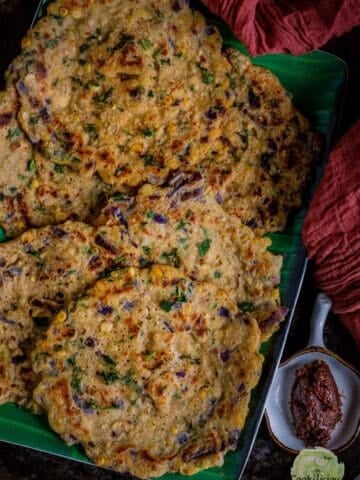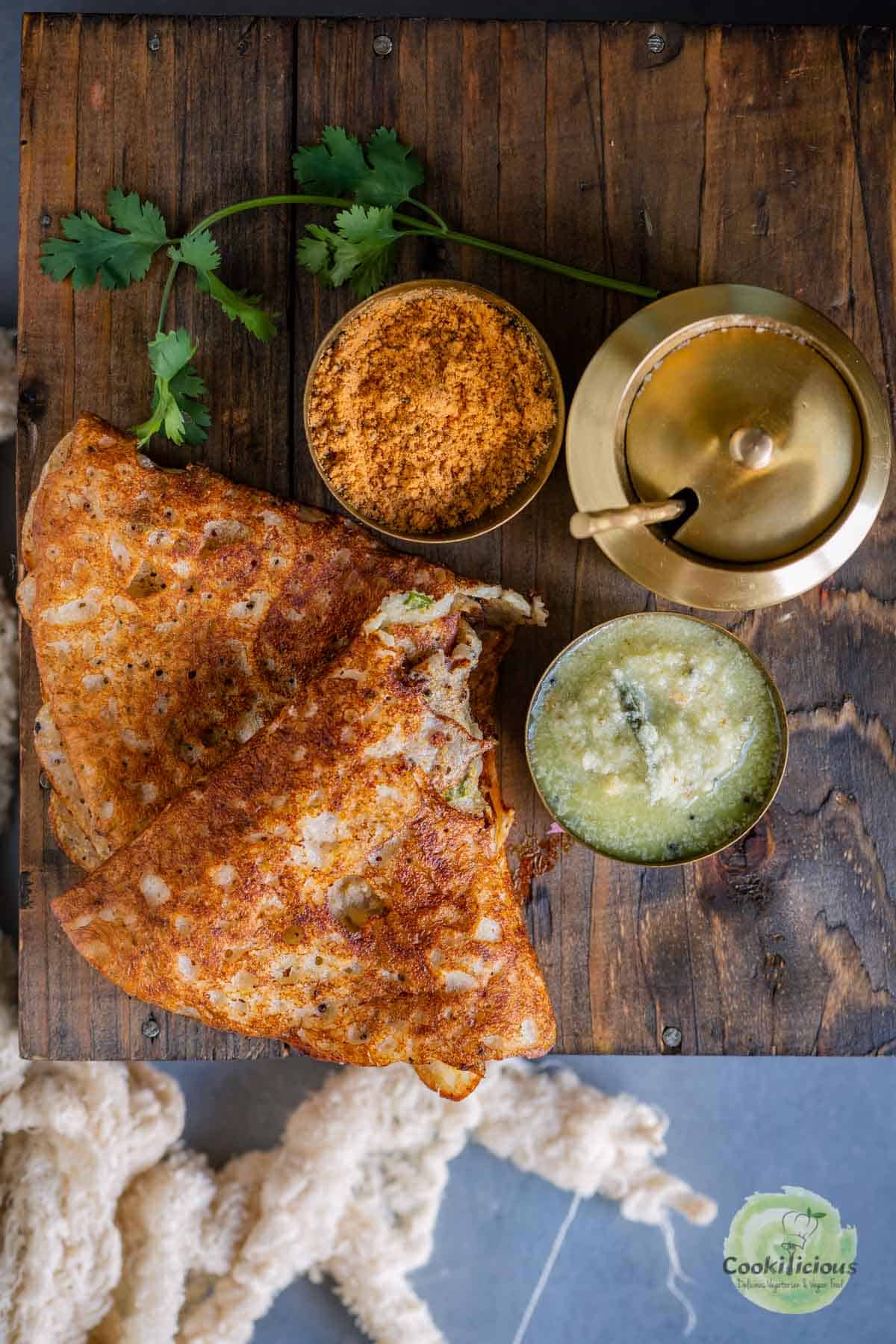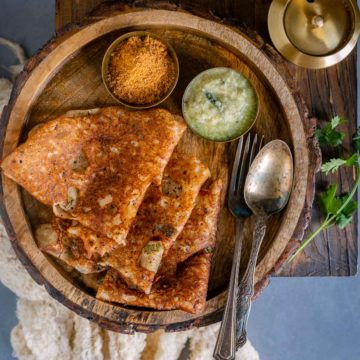Wheat Rava Dosa
Ingredients needed 🧾
How to make it 🔪
More dosa recipes
Recipe 📖
These Indian crepes are light, have a golden hue, crisp, aromatic, and extremely delicious to taste. This instant dosa recipe is a great alternative to the traditional dosa because of the way it is prepared. The batter is thin and porous which creates a mesh or net-like pattern (similar to crepes) when poured over the skillet. This is what makes the rava dosa stand out! One of the popular variations of sada or plain rawa dosa is onion rava dosa or wheat dosa. Here, onions are added to the batter. I like to cook and soften it before adding it to the batter. There is also rava masala dosa similar to the regular masala dosa where it’s stuffed with a potato mixture. I love making both these variations, frequently at home. Buckwheat crepes, Methi Ghavan, and Quinoa Dosa are some other varieties of crepes. Other flours - rice flour (which helps to give them a crispy texture) and all-purpose flour or maida are the two kinds of flours used here. Yogurt - You can either use full-fat or low-fat yogurt in this recipe. Greek yogurt can also be used. Yogurt or dahi gives the dosa a nice golden brown color. You can also use buttermilk. If doing so, then add additional water accordingly. Spices and herbs - cilantro, curry leaves, ginger, mustard seeds, cumin seeds, hing or asafoetida, and green chillies bring in a lot of flavors and aroma to the dosa. Onions - Since this is an onion rava dosa recipe, we need to add onions! Ghee - cooking this dosa in ghee is very essential to get that authentic flavor. Do not skip this. You can also use vegan ghee. Some also like to add chopped cashews, dry coconut pieces, and/or peppercorns to the batter. You can also add some grated veggies to the batter. Apart from the ingredients, another important thing in this rava dosa recipe process is the tava or skillet. Use a well-seasoned cast-iron skillet or a nonstick tawa.
To make these Indian crepes more filling, serve them with a side of potato curry like the one I made here or vegetable korma. You can have it for breakfast, lunch, dinner, evening snacks, or just about anytime you are hungry! They can also be packed in lunchboxes. They will not remain crispy, but still taste great! It’s best to make them fresh and consume them immediately while they are still hot. If you have them later, they will not be crispy and be a bit soggy.
